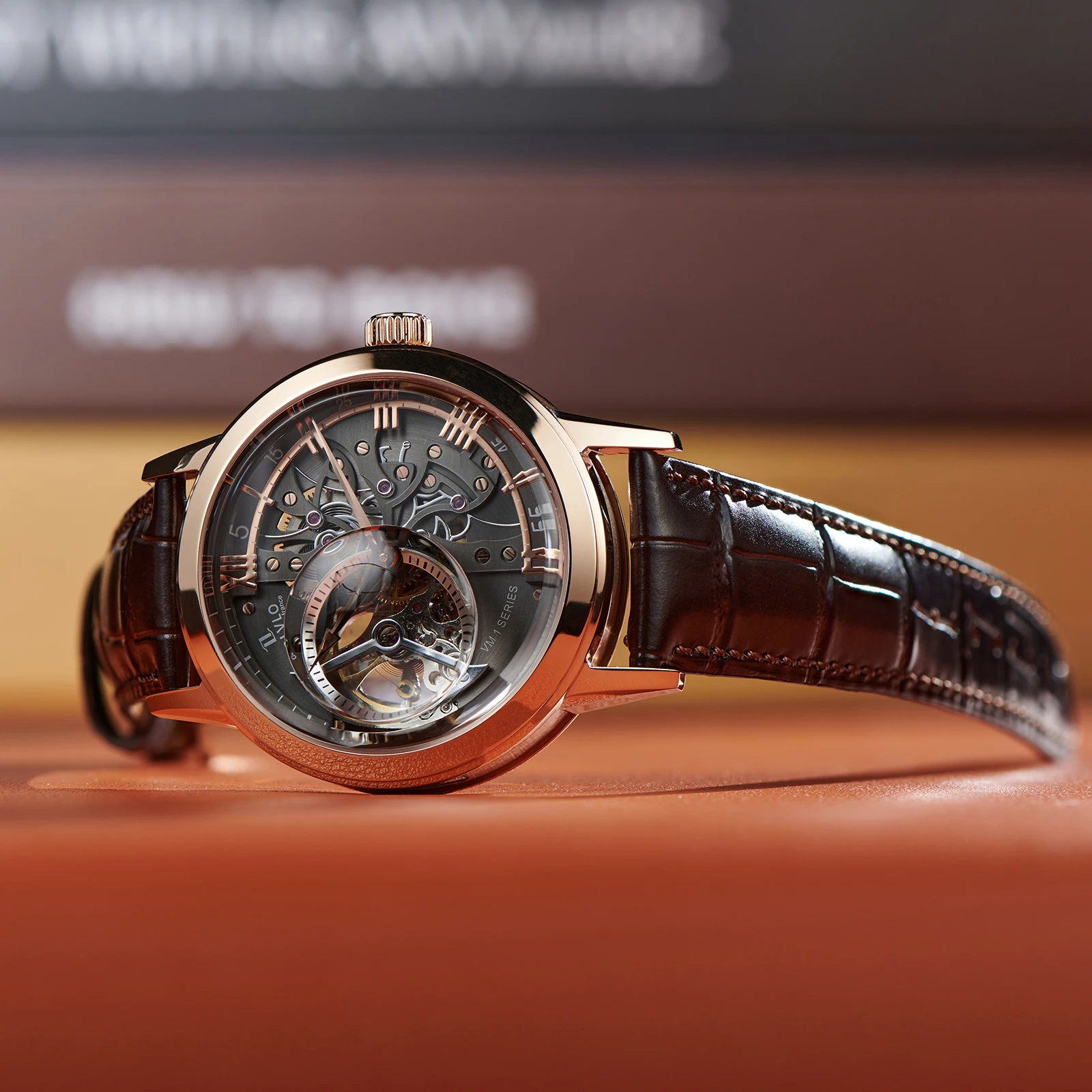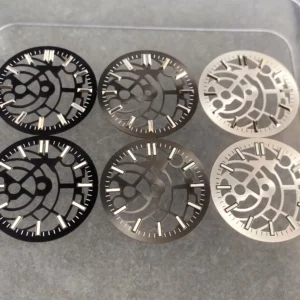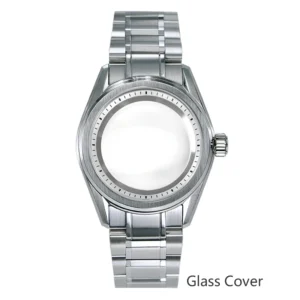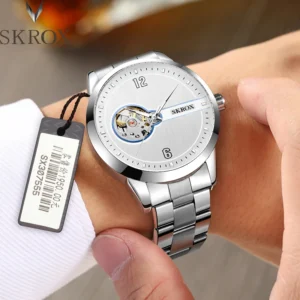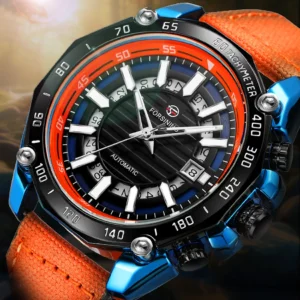Understanding Mechanical Watch Transparency: An Introduction
The world of mechanical watches offers a fascinating glimpse into the marriage of artistry and engineering. One of the most captivating aspects of these timepieces is transparency—the ability to see the intricate inner workings that power the watch. This transparency comes in two main forms: skeletonized dials and partially open dials.
These revealing designs transform watches from simple timekeeping tools into miniature mechanical art pieces worn on the wrist. Each approach offers a different perspective on the watch’s inner life, with skeletonized designs providing an extensive view of the movement, while partially open dials offer a more controlled glimpse.
The appeal of transparent watch dials extends back centuries, with watchmakers seeking ways to showcase their mechanical prowess. What began as a technical demonstration has evolved into a significant aesthetic choice for watch enthusiasts. The historical development of watch design shows how these transparent elements have become increasingly important in modern horology.
Whether you prefer the full mechanical display of a skeleton watch or the subtle peek offered by a partially open dial, both styles celebrate the beauty of mechanical watchmaking in their own distinctive ways.
What Are Skeletonized Dials?
A skeletonized watch represents the ultimate expression of mechanical transparency in horology. In these timepieces, watchmakers meticulously remove all non-essential material from the movement’s plates, bridges, and dial, creating a see-through effect that reveals the watch’s beating heart in its entirety.
The process begins with a complete mechanical movement, from which craftsmen carefully cut away excess metal while maintaining the structural integrity necessary for proper function. This delicate balance between removal and retention requires exceptional skill and experience. The result is a movement where you can see through the watch from front to back, with every gear, spring, and lever exposed to view.
Key characteristics of skeletonized dials include:
- Complete visibility of the movement architecture
- Extensive removal of metal from bridges and plates
- Visibility of the gear train, mainspring, balance wheel, and escapement
- Minimal or completely absent traditional dial
- The movement effectively becomes the dial itself
What makes skeletonization truly special is that it transforms the watch movement from a hidden engine to the star of the show. The process of exposing watch movements involves not just removing material but often enhancing the remaining components through decorative techniques like hand-engraving, beveling, and polishing.
In a skeleton watch, time-telling becomes just one function of the timepiece, sharing importance with the visual drama of the exposed mechanical ballet happening within.
Key Characteristics of Skeletonized Watches
Skeletonized watches stand apart from other timepieces through several distinctive features that make them immediately recognizable and highly coveted by collectors and enthusiasts.
Complete Transparency: The defining feature is the extensive visibility of the movement’s components from both front and back. This creates a three-dimensional mechanical landscape that invites exploration.
Artistic Decoration: True skeletonization is never just about removing material. The exposed components receive extensive decoration including:
- Hand-engraving with scrollwork or geometric patterns
- Perlage (circular graining) on plates
- Côtes de Genève (Geneva stripes) on bridges
- Black polishing on steel components
Gold or rhodium plating for contrast and protection
Structural Engineering: Removing material while maintaining function requires exceptional engineering. Bridges and plates must remain rigid enough to support the gear train despite being dramatically reduced in mass.
Visual Complexity: The exposed mechanics create a busy visual landscape that often prioritizes aesthetic impact over easy time reading.
Historical Significance: Skeletonization techniques originated in the 18th century with pocket watches, demonstrating the watchmaker’s skill and the beauty of mechanical engineering.
When browsing automatic skeleton watches, you’ll notice these timepieces often showcase the oscillating weight (rotor) that winds the movement, adding another dynamic element to the visual experience. This rotating component becomes part of the aesthetic appeal, swinging with the natural motion of your wrist.
A true skeleton watch represents both technical mastery and artistic expression, with every visible component carefully finished to create a harmonious mechanical display.
What Are Partially Open Dials?
Partially open dials take a more reserved approach to revealing a watch’s internal mechanics. Unlike fully skeletonized watches, these designs maintain significant portions of the traditional dial while strategically revealing selected parts of the movement beneath.
These watches strike a thoughtful balance between mechanical display and traditional watch aesthetics. By preserving most of the dial structure, they offer better legibility while still providing the mechanical intrigue that draws many to transparent designs.
Key characteristics of partially open dials include:
- Selective visibility of specific movement parts
- Retention of traditional dial elements like hour markers
- Strategic placement of openings to showcase interesting components
- Better balance between mechanical display and time-telling function
- More conservative aesthetic that works well in diverse settings

The openings in these dials are carefully designed to frame particular movement elements. Most commonly, they showcase the balance wheel—the “heartbeat” of the watch—or other visually interesting components like the escapement or portions of the gear train.
For those who appreciate mechanical watches but prefer a more subtle approach, open heart automatic watches offer the perfect middle ground. They provide a glimpse into the watch’s soul without fully exposing its inner workings, maintaining a sense of mystery while still celebrating horological craftsmanship.
Types of Partially Open Dials
Partially open dials come in two main varieties, each with distinct characteristics and aesthetic appeal: open-heart designs and open-worked designs.
Open-Heart Designs
Open-heart watches are characterized by a single, typically circular aperture that specifically reveals the balance wheel and escapement—the “heart” of the mechanical movement. Key features include:
- Focused Visibility: The opening usually showcases only the balance wheel, which oscillates several times per second, creating a hypnotic visual effect
- Traditional Placement: The aperture is typically positioned at 6 o’clock or sometimes 12 o’clock on the dial
- Minimal Interruption: The majority of the dial remains intact, preserving traditional time-telling elements
- Subtle Animation: The constant motion of the balance wheel adds a dynamic element to an otherwise static dial
Open-heart watches gained popularity as they offer an accessible entry point into the world of mechanical transparency. Their design maintains excellent legibility while still providing the satisfaction of seeing the movement’s most active component.
Open-Worked Designs
Open-worked dials (sometimes called semi-skeleton dials) feature multiple openings or artistic cutouts that reveal more of the movement than open-heart designs, but less than fully skeletonized watches. Their distinguishing characteristics include:
- Multiple Apertures: Several openings may reveal different parts of the movement
- Artistic Patterns: The cutouts often form decorative patterns that become part of the design
- Partial Movement Visibility: More components are visible than in open-heart designs
- Balanced Approach: Retains enough dial structure for good legibility while offering more mechanical display
The captivating world of open heart watches reveals how these designs have evolved from simple circular openings to more complex and artistic implementations. Many modern interpretations use the negative space created by the openings as an integral part of the dial design.
Both styles represent different points on the spectrum between solid dials and full skeletonization, allowing watch enthusiasts to choose the level of mechanical exposure that suits their personal taste.
Skeletonized vs. Partially Open Dials: Direct Comparison
When deciding between skeletonized and partially open watch dials, understanding their key differences can help you make an informed choice. Here’s a detailed comparison of these two approaches to mechanical transparency:
| Feature | Skeletonized Dials | Partially Open Dials |
|---|---|---|
| Movement Visibility | Nearly complete exposure of the entire movement | Selective exposure of specific components |
| Dial Structure | Minimal or completely absent traditional dial | Maintains significant portions of traditional dial |
| Time Legibility | Can be challenging due to busy background | Generally easier with more dial elements preserved |
| Visual Impact | Bold, dramatic mechanical statement | Subtle, balanced glimpse into mechanics |
| Craftsmanship Focus | Extensive decoration of movement components | Balance between dial design and exposed parts |
| Manufacturing Complexity | Requires extensive modification and decoration | Moderate modification with focused attention |
| Versatility | Often more specialized for enthusiast appreciation | More versatile for various occasions |
Skeletonized watches prioritize the complete display of mechanical components, often at the expense of easy time-reading. They celebrate the watch as a mechanical artwork first and a timekeeping device second. The emphasis is placed on intricate decoration of every visible component.
Partially open dials take a more balanced approach, offering a glimpse of mechanical beauty while maintaining better functionality as a timepiece. They’re often more versatile for everyday wear and formal occasions where subtle elegance is preferred.
The aesthetic comparison between skeleton and open-heart designs reveals that your choice ultimately depends on whether you prefer the dramatic impact of full mechanical exposure or the subtle charm of a carefully framed glimpse into the watch’s inner workings.
The Craftsmanship Behind Skeletonized Watches
The creation of a skeletonized watch represents one of the highest expressions of horological craftsmanship. This process requires extraordinary skill and patience, with countless hours of handwork invested in each timepiece.
The journey begins with movement design or modification specifically intended for skeletonization. Watchmakers must carefully plan which structural elements can be removed while maintaining the integrity and functionality of the mechanism. This delicate balance between removal and retention requires deep understanding of mechanical engineering.
Once the design is finalized, the meticulous process of material removal begins. Using tiny, specialized saws and files, craftspeople carefully cut away excess metal from bridges and plates, often reducing them to the minimum thickness possible while maintaining structural integrity.
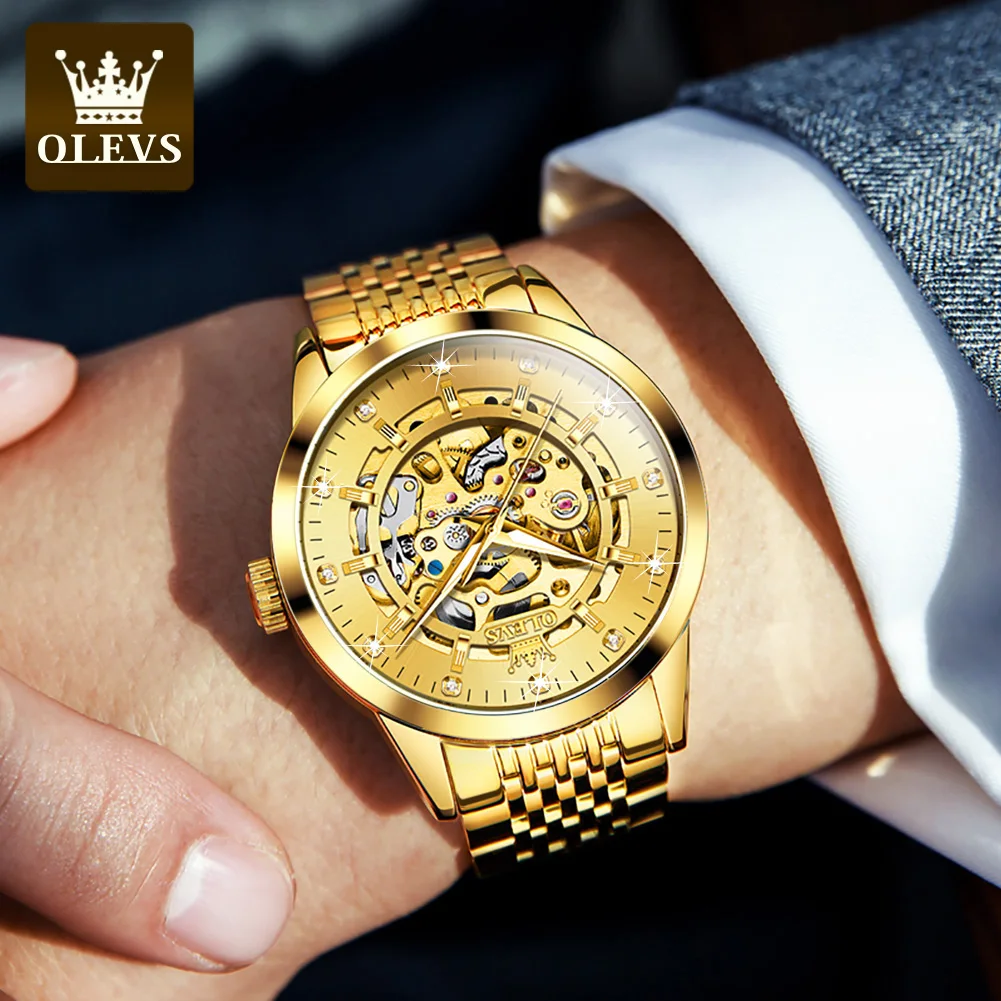
What truly elevates skeletonization to an art form is the decoration that follows:
- Anglage (beveling): Each edge is carefully beveled and polished to create smooth, reflective surfaces
- Black polishing: Steel components receive mirror-like finishes that appear black when viewed from certain angles
- Hand-engraving: Remaining surfaces often feature intricate patterns or motifs
- Perlage and striping: Circular or linear patterns applied to flat surfaces
- Finishing consistency: All visible components receive equal attention to detail
Many mechanical skeleton watches showcase not only the standard components but also feature additional complications like tourbillons or moon phases, further increasing the complexity and visual interest of the finished piece.
The final result represents hundreds of hours of expert handwork, explaining why high-quality skeletonized watches command premium prices and are considered treasures in any collection.
The Artistry of Partially Open Dials
While skeletonized watches showcase extreme transparency, partially open dials demonstrate a different kind of artistry—one focused on balance, restraint, and strategic revelation. The craftsmanship behind these designs is equally impressive but serves a different aesthetic philosophy.
Creating an effective partially open dial begins with determining which movement component will be the star of the show. For open-heart designs, this is typically the balance wheel, while open-worked dials may feature multiple elements. Designers carefully position these openings to create visual harmony with the overall dial design.
The edges of these apertures require particular attention. They must be precisely cut, finished, and often beveled to create clean transitions between the dial surface and the revealed movement below. Many manufacturers apply decorative frames or chamfers around these openings to enhance their visual impact.
What makes partially open dials particularly challenging is maintaining structural integrity while creating these openings. Dial makers must ensure the remaining material provides adequate support while achieving the desired aesthetic effect.
The visible movement parts receive special attention as well. Since these components will be constantly on display, they often receive enhanced decoration compared to their counterparts in fully-cased movements. Special finishing techniques might include:
- Circular graining on visible plates
- Enhanced polishing on screws and other hardware
- Color treatments to make certain elements stand out
- Specialized coatings for protection and visual enhancement
The evolution of dive watch technology has influenced many aspects of modern watchmaking, including how manufacturers approach partially open dials, with improved water resistance and structural integrity being incorporated into these designs.
The artistry of partially open dials lies in their restraint—knowing exactly how much to reveal and what to conceal, creating a perfect balance between mystery and disclosure.
How to Choose Between Skeletonized and Partially Open Dials
Selecting between a skeletonized watch and one with a partially open dial comes down to personal preference, lifestyle considerations, and your specific appreciation for different aspects of watchmaking. Here are key factors to consider when making your choice:
Aesthetic Preference
* Do you prefer the bold mechanical statement of a fully exposed movement?
* Or do you appreciate the subtle glimpse of mechanics with more traditional dial elements?
* Consider which design language speaks more to your personal style
Legibility Requirements
* How important is quick, at-a-glance time reading to you?
* Partially open dials typically offer better legibility than fully skeletonized watches
* Consider your daily activities and when you’ll most often check the time
Versatility Needs
* Skeletonized watches make a strong visual statement that may not suit all occasions
* Partially open dials often transition more easily between casual and formal settings
* Think about how the watch will integrate with your wardrobe and activities

Appreciation Focus
* If you value seeing the complete mechanical symphony, a skeleton watch delivers
* If you prefer a hint of mechanics while maintaining clean aesthetics, partially open dials excel
* Consider what aspect of watchmaking fascinates you most
Budget Considerations
* Quality skeletonization typically involves more extensive handwork and decoration
* Partially open dials often (though not always) command lower price points
* Determine what represents the best value for your horological interests
Understanding how long automatic watches last is also important when making your investment decision, as proper care can ensure either style provides decades of enjoyment.
Automatic Skeleton Watches, Open Heart Automatic Watches
$98.36 Select options This product has multiple variants. The options may be chosen on the product pageBlack Skeleton Watches, Mechanical Skeleton Watches
Price range: $37.40 through $111.92 Select options This product has multiple variants. The options may be chosen on the product pageRugged Automatic Watches, Unique Automatic Watches
Price range: $228.96 through $231.10 Select options This product has multiple variants. The options may be chosen on the product pageGMT Automatic Watches, Unique Automatic Watches
$420.10 Select options This product has multiple variants. The options may be chosen on the product pageAutomatic Skeleton Watches, Mechanical Skeleton Watches
Price range: $166.16 through $169.76 Select options This product has multiple variants. The options may be chosen on the product pageAutomatic Skeleton Watches, Military Inspired Automatic Watches, Unique Automatic Watches
$191.88 Select options This product has multiple variants. The options may be chosen on the product page
Remember that there’s no objectively “better” choice—only the watch that brings you more joy when you glance at your wrist. Many enthusiasts eventually add both styles to their collection to appreciate different expressions of mechanical watchmaking art.
Care and Maintenance Differences
The unique characteristics of skeletonized and partially open dial watches require special attention to ensure they remain in optimal condition. Understanding these differences will help you preserve your timepiece’s beauty and functionality.
Cleaning Considerations:
* Skeletonized watches have more exposed components that can trap dust and debris
* Partially open dials concentrate potential contamination to specific areas
* Never use liquid cleaners directly on exposed movements of either type
* Compressed air can help remove dust from difficult-to-reach areas in skeleton watches
* Use only soft brushes specifically designed for watch cleaning
Moisture Protection:
* Exposed movements are generally more vulnerable to humidity and moisture
* Take extra care when wearing skeletonized watches in humid environments
* Remove your watch before activities involving water, especially with skeleton designs
* Even water-resistant models with transparent elements require special attention
Service Frequency:
* Both styles benefit from regular professional servicing
* Skeletonized watches may require more frequent service (every 3-4 years)
* Partially open dials typically follow standard service intervals (4-5 years)
* Visual inspection is easier with transparent designs—look for dust accumulation or unusual movement behavior
Storage Recommendations:
* Store either watch type in a watch box or case when not in use
* Consider a watch winder for automatic models to maintain consistent function
* Keep away from direct sunlight which can fade decoration on exposed components
* Avoid magnetic sources which can affect the exposed balance wheels
The collection of skeleton watches available today incorporates various levels of water resistance and durability, but all benefit from thoughtful care habits. Remember that the more of the movement that’s visible, the more vigilant you should be about maintenance and protection.
Regular professional servicing remains the most important factor in ensuring your transparent timepiece continues to perform beautifully for generations.
Are Skeletonized and Open Dials Right for Everyone?
While transparent watch designs are fascinating, they’re not necessarily suited to every watch enthusiast or situation. Consider these factors when determining if these styles align with your preferences:
Do you appreciate mechanical complexity?
Transparent dials showcase the intricate engineering behind mechanical watches. If you’re fascinated by gears, springs, and the ballet of moving parts, you’ll likely appreciate these designs. However, if you simply want to tell time with minimal distraction, a solid dial might better suit your needs.
How important is easy legibility?
The busy visual landscape of skeletonized watches can sometimes make quick time-reading more challenging. If you need to frequently check the time with just a glance, partially open dials or traditional solid dials may better serve your practical needs.
Do you enjoy explaining your watch to others?
Transparent watches often attract attention and questions. Some enthusiasts enjoy these conversations about horological craftsmanship, while others prefer more understated timepieces that don’t invite as many inquiries.
Will this be your first mechanical watch?
For newcomers to mechanical watches, partially open designs can provide an excellent introduction—offering a glimpse of the mechanics while maintaining familiar dial elements. Full skeleton watches might be better appreciated after developing an understanding of how mechanical movements function.
What’s your personal style?
Transparent dials make stronger visual statements than their solid counterparts. Consider whether this bold aesthetic complements your personal style and the environments where you’ll wear the watch.
For many watch enthusiasts, the journey often begins with more traditional designs before exploring the world of mechanical transparency. This progression allows for a deeper appreciation of the craftsmanship revealed in skeletonized and partially open timepieces.
How Do These Transparent Dials Impact Watchmaking Trends?
Transparent dial designs have significantly influenced modern watchmaking, driving innovation in both technical execution and aesthetic direction. Their rising popularity reflects a broader appreciation for mechanical craftsmanship in an increasingly digital world.
These revealing designs serve as powerful statements against planned obsolescence. While many electronic devices are sealed units designed to be replaced rather than repaired, skeletonized and partially open watches proudly display their mechanical hearts—timepieces built to last generations with proper care.
The popularity of transparent dials has encouraged watch brands to improve the finishing and decoration of movement components that were previously hidden from view. This emphasis on movement aesthetics has elevated the overall quality of mechanical watchmaking, even in more accessible price segments.
Modern manufacturing techniques have expanded the possibilities for transparent designs. Advanced CNC machining, laser cutting, and newer materials allow for more intricate and precise openings while maintaining structural integrity. These technological advancements have made transparent dials more accessible to a broader audience.
The unique automatic watches available today often incorporate transparent elements as key design features rather than mere novelties. This integration demonstrates how these designs have evolved from technical demonstrations to central aesthetic principles in contemporary watchmaking.
Whether transparent dials represent a lasting trend or a momentary fashion remains to be seen, but their influence on elevating appreciation for mechanical craftsmanship is undeniable. They continue to serve as powerful reminders that in watchmaking, how something works can be as beautiful as how it looks.

